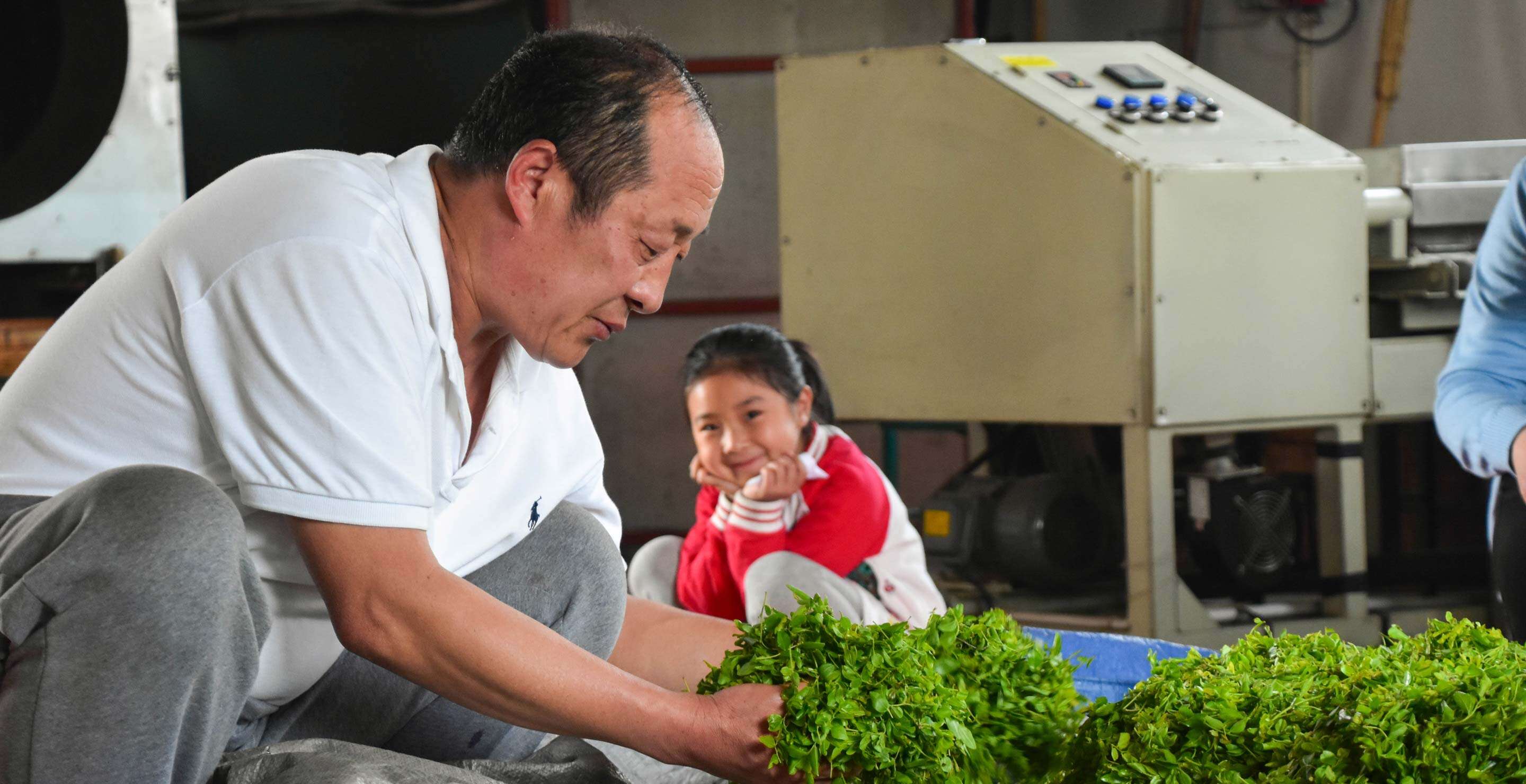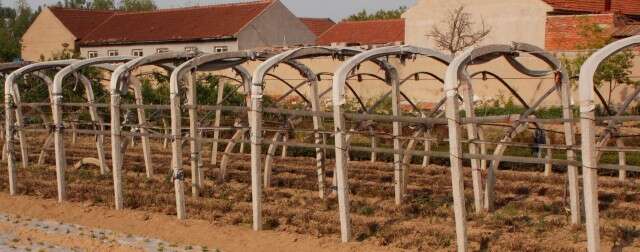The He Family in Laoshan Village
has been growing tea since the 1950’s.
At that time, Mr. He’s father was one of the first farmers to move from growing potatoes and beans to experimenting with tea on the slopes of the Taoist holy mountain.

As one of the northernmost, coldest tea growing regions in the world, there have always been unique challenges for the He Family to coax such sweet, delicate and nuanced flavor from their rocky soil and ocean climate. For example, while white tea can grow without assistance throughout the winters in warm Fujian, the He Family needs to protect their plants with three layers of greenhouse protection during the winter months. Winters in Shandong province last longer than China’s more traditional growing regions in the south, giving the He Family and all of Laoshan a later start to spring picking. Even when the weather is kind, these are difficult conditions to maintain tea plants. The payoff is the intense rich and nuanced tea that only challenging growing conditions can inspire.
Three layers of greenhouse protection keeps the He Family’s tea safe from freezes over a long winter.
White tea grows wild, tall, and unmanaged in Jiangyangcun above the Chixi Brook.
Since 2015, bitter cold winters have killed off nearly half of the expected spring harvest each year, forcing the He family to trim mature plants all the way down to the roots and let them recover all summer for a scarce autumn harvest. This devastating loss has had an unexpected upside. Though harvests are small, the tea that can be picked has been sweeter and more flavorful than ever. The He Family has been making do for three years with less tea, and working to insulate their plants even more intensely through the winter, relying on charging higher prices for the increased labor and decreased harvest.
This year brought about a new threat to tea in the area.
After another historically cold winter, the short spring picking window in 2018 was cut off in May by sudden, unexpected extreme heat and intense rains followed right after by alternating unseasonably cold weather.
This unprecedented short window to harvest and finish tea after a bitter winter has meant the smallest yield in a generation for the He Family, and for the entire small village of Laoshan.
The He Family has been working to manage their tea through the late spring and early summer by looking for picking windows after cold spots to put together a larger harvest.
But as it stands, the whole region faces a crisis.
While one or two years of difficult harvesting can be absorbed through the fortitude and determination for which Shandong Province is famous, the fear is that this may be the turning point for a long term trend of more extreme weather in the area and across all tea growing regions.
 Liu Jiaqi watches as her grandfather works with fresh leaves in the He Family's workshop.
Liu Jiaqi watches as her grandfather works with fresh leaves in the He Family's workshop.Shandong Province


 How To
How To Myths & Legends
Myths & Legends Travelogue
Travelogue Tasting Journal
Tasting Journal Talking Shop
Talking Shop Tea 101
Tea 101 Watch
Watch Teaware
Teaware News
News






Leave a Reply